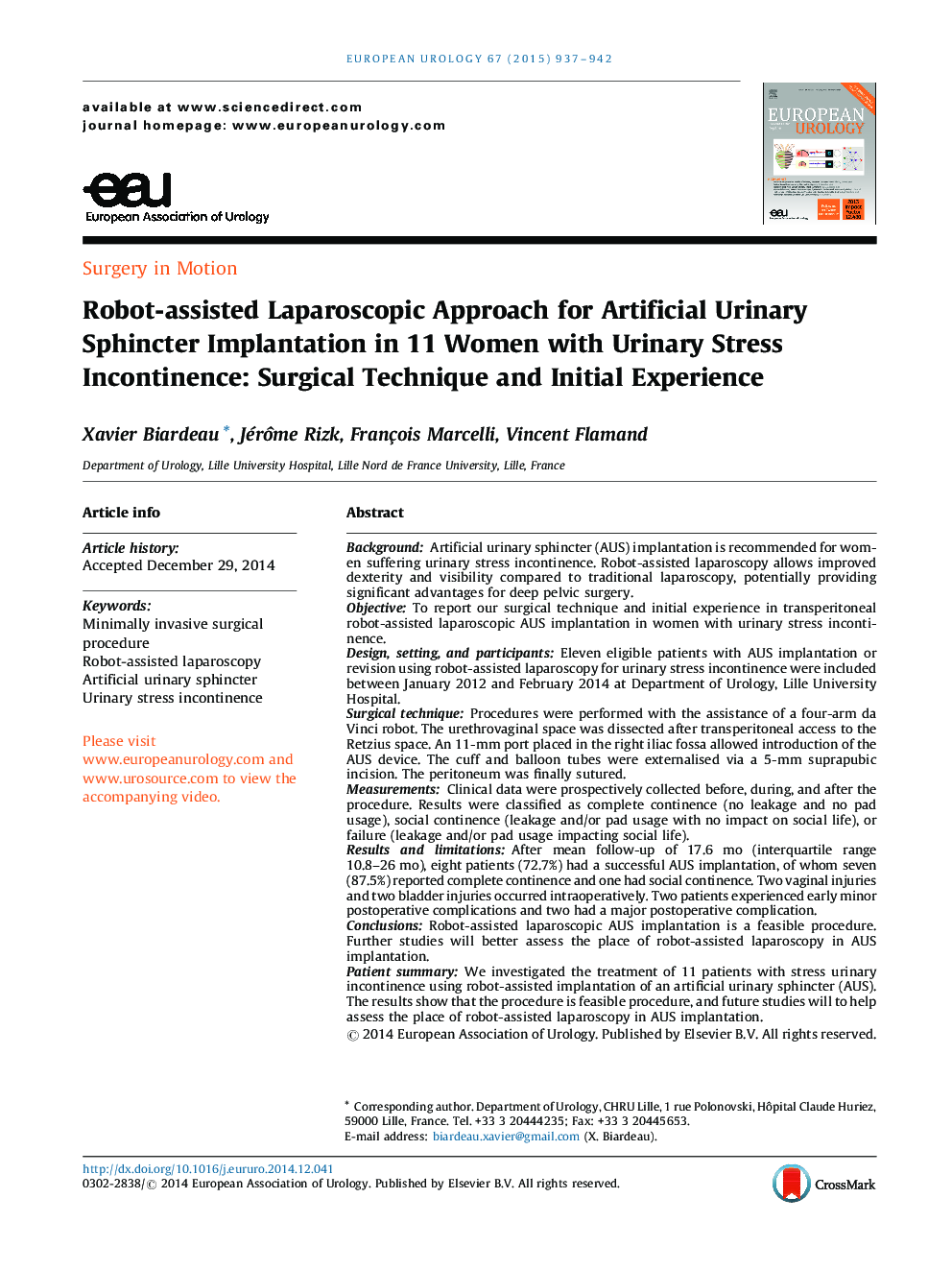| کد مقاله | کد نشریه | سال انتشار | مقاله انگلیسی | نسخه تمام متن |
|---|---|---|---|---|
| 3923615 | 1253055 | 2015 | 6 صفحه PDF | دانلود رایگان |
BackgroundArtificial urinary sphincter (AUS) implantation is recommended for women suffering urinary stress incontinence. Robot-assisted laparoscopy allows improved dexterity and visibility compared to traditional laparoscopy, potentially providing significant advantages for deep pelvic surgery.ObjectiveTo report our surgical technique and initial experience in transperitoneal robot-assisted laparoscopic AUS implantation in women with urinary stress incontinence.Design, setting, and participantsEleven eligible patients with AUS implantation or revision using robot-assisted laparoscopy for urinary stress incontinence were included between January 2012 and February 2014 at Department of Urology, Lille University Hospital.Surgical techniqueProcedures were performed with the assistance of a four-arm da Vinci robot. The urethrovaginal space was dissected after transperitoneal access to the Retzius space. An 11-mm port placed in the right iliac fossa allowed introduction of the AUS device. The cuff and balloon tubes were externalised via a 5-mm suprapubic incision. The peritoneum was finally sutured.MeasurementsClinical data were prospectively collected before, during, and after the procedure. Results were classified as complete continence (no leakage and no pad usage), social continence (leakage and/or pad usage with no impact on social life), or failure (leakage and/or pad usage impacting social life).Results and limitationsAfter mean follow-up of 17.6 mo (interquartile range 10.8–26 mo), eight patients (72.7%) had a successful AUS implantation, of whom seven (87.5%) reported complete continence and one had social continence. Two vaginal injuries and two bladder injuries occurred intraoperatively. Two patients experienced early minor postoperative complications and two had a major postoperative complication.ConclusionsRobot-assisted laparoscopic AUS implantation is a feasible procedure. Further studies will better assess the place of robot-assisted laparoscopy in AUS implantation.Patient summaryWe investigated the treatment of 11 patients with stress urinary incontinence using robot-assisted implantation of an artificial urinary sphincter (AUS). The results show that the procedure is feasible procedure, and future studies will to help assess the place of robot-assisted laparoscopy in AUS implantation.
Journal: European Urology - Volume 67, Issue 5, May 2015, Pages 937–942
